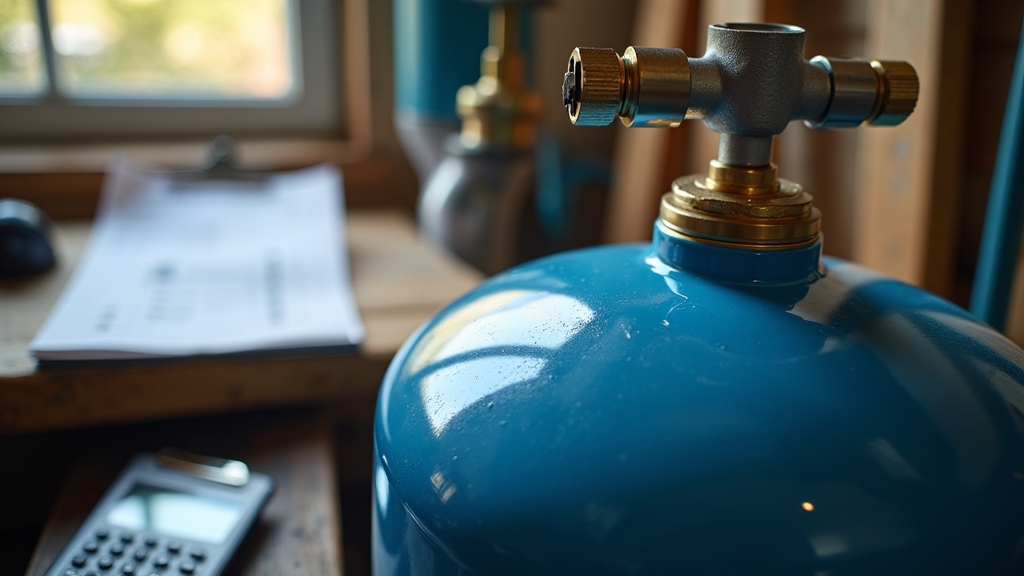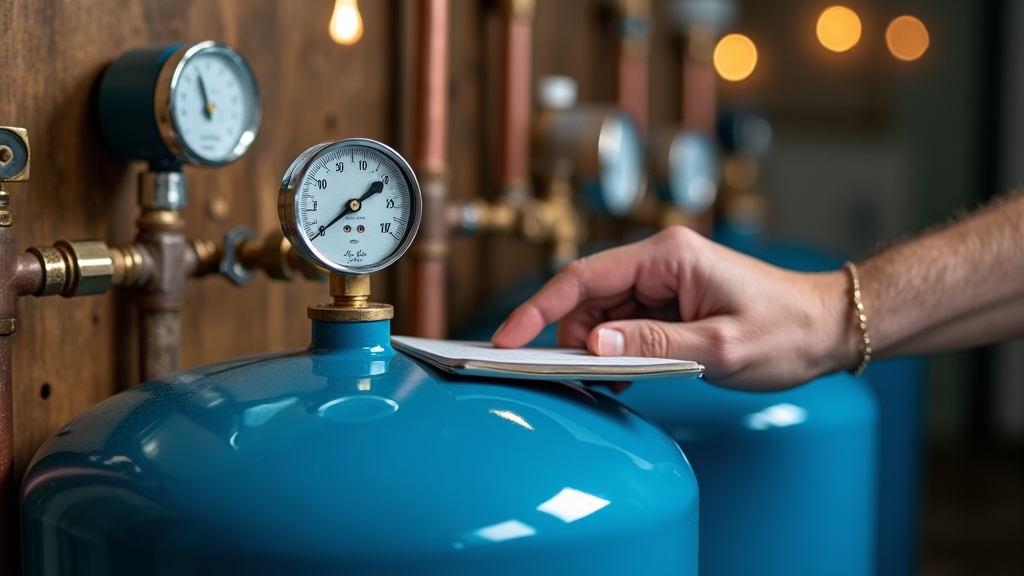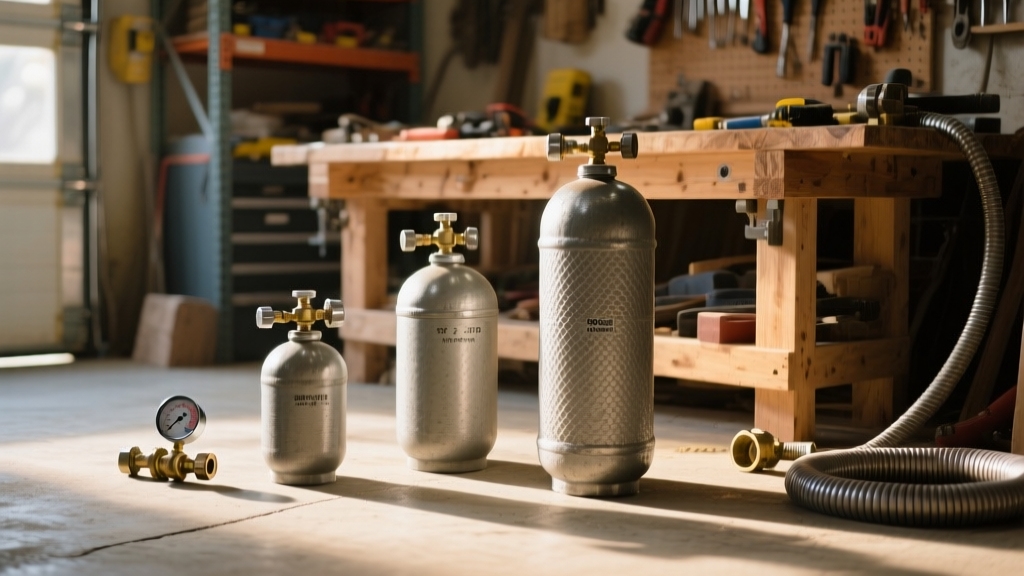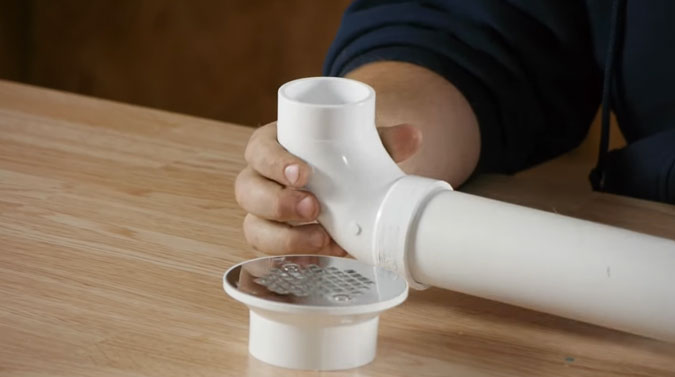You need to size your bladder tank based on your pump’s flow rate and desired drawdown volume to guarantee steady pressure and pump longevity. For pumps up to 10 GPM, allocate 1 gallon of drawdown per GPM. For higher flows, increase to 1.5–2 gallons per GPM.
Multiply your pump runtime by flow rate to find drawdown, then adjust tank size accordingly. Choosing the correct tank minimizes cycling and maximizes efficiency. Understanding the full sizing process clarifies ideal performance.
Key Takeaways
- Choose tank drawdown capacity based on pump flow rate: 1 gallon per GPM ≤10 GPM, 1.5 gallons per GPM up to 20 GPM, then 2 gallons per GPM above 20 GPM.
- Multiply pump runtime (1-2 minutes) by flow rate (GPM) to find drawdown volume needed for your system.
- Convert drawdown volume to total tank size using a drawdown factor between 0.2 and 0.45 for proper sizing.
- Residential bladder tanks commonly range from 20 to 120 gallons; larger tanks reduce pump cycling and improve pressure stability.
- Proper tank size optimizes pump efficiency, reduces wear, stabilizes pressure, and extends system lifespan.
Understanding Pump Flow Rate and Its Impact on Tank Size

When you understand pump flow rate, the volume of liquid a pump moves per unit time, you can accurately determine the appropriate bladder tank size needed for your system.
Pump flow rate, expressed in gallons per minute (GPM), is vital for sizing the tank to match system demand and avoid inefficiencies. Properly sizing the system also involves adjusting pressure to optimize performance and safety.
Understanding pump flow rate in GPM is essential for proper tank sizing and system efficiency.
For example, pumps operating at 10 GPM or less require a drawdown capacity equal to 1 gallon per GPM to prevent short cycling.
As flow rates increase beyond 10 GPM, drawdown capacity should scale to 1.5 gallons per GPM up to 20 GPM, and 2 gallons per GPM for flows above 20 GPM.
Matching tank size to flow rate ensures steady pressure, reduces pump wear, and optimizes energy use by maintaining operation near the pump’s Best Efficiency Point.
Additionally, a properly sized tank helps maintain consistent pressure and reduces the frequency of pump cycling, extending pump lifespan.
Calculating Minimum Runtime and Drawdown Capacity
Accurately sizing a bladder tank requires calculating the minimum pump runtime to prevent short cycling and determine the necessary drawdown capacity.
You start by identifying the pump’s flow rate and applying the recommended runtime, usually 1 minute for motors under 2 HP and 2 minutes for larger ones.
Multiply flow rate (GPM) by runtime (minutes) to find the drawdown capacity in gallons. Understanding the pump’s motor protection method can influence system runtime and tank sizing.
Keep in mind, drawdown is the usable volume before the pump restarts and is always less than the tank’s total volume due to air compression and pressure limits.
Use the drawdown factor, typically 0.2 to 0.45 depending on system pressures, to convert drawdown capacity to total tank volume.
Selecting the correct tank size helps maximize system efficiency and extend the motor’s life.
This ensures your bladder tank balances pump longevity, cycling frequency, and system reliability without oversizing.
Exploring Bladder Tank Size Options for Residential Use
Although selecting the right bladder tank size depends on several variables, understanding typical residential tank capacities helps you make informed decisions.
Common sizes range from 20 to 120 gallons, with 30 to 85 gallons fitting most homes. For example, a 20-gallon tank provides about 6 gallons of usable water, while an 85-gallon tank offers roughly 25 gallons drawdown. It is important to note that water pressure is controlled by pressure switch settings, not tank size.
Typical bladder tank sizes range from 20 to 120 gallons, with 30 to 85 gallons ideal for most homes.
Your pump’s flow rate and minimum runtime dictate the required drawdown, which directly influences tank size. Larger tanks reduce pump cycling, improving longevity and pressure stability, but require more space and investment. Turning off the pump during extended absences can help reduce unnecessary wear and tear on the system.
You should match tank drawdown to or exceed calculated demand. When unsure, opting for a slightly larger tank guarantees system efficiency and durability.
Bladder tanks’ compact design allows flexible installation in typical residential spaces without sacrificing capacity.
Comparing Dimensions and Types of Bladder Tanks
Since bladder tanks come in various sizes and configurations, understanding their dimensions and types is essential for selecting the right model for your application.
Vertical tanks range from about 30 to 1300 gallons, with diameters between 24″ to 54″ and heights increasing from 95″ to over 130″ as capacity grows. Selecting a tank with the appropriate pressure rating ensures safe operation in your system.
Horizontal tanks suit lower height spaces, typically 50 to 75 gallons, measuring 45″ to 60″ in length and 24″ in diameter. However, larger models can exceed 80″ in length with diameters up to 54″.
Material choice—carbon or stainless steel—and pressure ratings (around 125 psi) influence wall thickness and external dimensions. Proper sealing methods and compatible materials prevent leaks and maintain long-term durability.
Connection placement, lifting lugs, and support legs also affect footprint and installation.
Your choice hinges on spatial constraints and system requirements, balancing vertical clearance against floor space availability.
Additionally, tanks must be properly pressurized to match the cold-water supply pressure to maintain system pressure and prevent damage.
How Proper Tank Sizing Influences System Performance?

When you size a bladder tank appropriately, you directly enhance pump longevity and overall system efficiency by minimizing short cycling. Understanding the drawdown capacity of your system is key to matching tank size with pump performance.
This reduces mechanical wear, stabilizes water pressure, and optimizes energy consumption. Proper tank sizing aligns tank drawdown capacity with pump flow rate and runtime, ensuring the pump runs efficiently and less frequently. Additionally, incorporating the correct tank volume adds thermal mass that helps maintain steady system operation.
Minimizing wear, stabilizing pressure, and optimizing energy by matching tank capacity to pump flow and runtime.
This lowers maintenance needs and energy costs.
Key impacts include:
- Pump Protection: Reduces frequent starts/stops, extending motor life and preventing overheating.
- Pressure Stability: Maintains consistent water pressure, preventing plumbing stress and flow interruptions.
- Energy Efficiency: Decreases pump cycling frequency, lowering electricity use and operational costs.
Ultimately, correct sizing balances system responsiveness, durability, and cost-effectiveness for ideal performance.
Frequently Asked Questions
How Often Should I Inspect or Replace My Bladder Tank?
You should inspect your bladder tank internally every 10 years after installation, then every 10-20 years unless you detect corrosion or damage sooner.
Externally, inspect at least every 5 years to catch leaks or deformation early.
Replace the tank typically after 10-15 years, especially if you notice corrosion, bladder failure, or mechanical damage.
Regular semi-annual and annual maintenance also helps extend its lifespan and prevents unexpected failures.
Can Bladder Tanks Be Used With Well Water Systems?
Of course, you could ignore bladder tanks and enjoy erratic water pressure and pump wear.
But bladder tanks are specifically engineered for well water systems. They use a flexible rubber bladder to separate air and water, maintaining consistent pressure and preventing pump short cycling.
You’ll benefit from extended pump life and steady water delivery. Just guarantee proper sizing and installation to match your pump’s flow and pressure specs for ideal performance.
What Maintenance Is Required to Prevent Bladder Tank Failure?
To prevent bladder tank failure, you must regularly inspect the tank for leaks, corrosion, and damage.
Check and maintain air pressure about 2 psi below pump cut-on pressure annually.
Drain and clean the tank periodically to remove sediment and avoid waterlogging.
Listen for unusual noises and monitor pump cycling frequency.
Replace the bladder immediately if water appears at the air valve.
Schedule professional inspections yearly to guarantee all components operate at their best.
Are Bladder Tanks Compatible With All Pump Brands?
Think of bladder tanks as universal puzzle pieces. They’re designed to fit most pump brands thanks to standardized connections like NPT or NPTF.
You’ll find materials and pressure ratings that align with various pumps, whether Goulds, Amtrol, or Flotec.
While compatibility is broad, you should still verify pressure ranges and fittings match your pump’s specs.
This ensures seamless integration and peak performance.
How Does Water Temperature Affect Bladder Tank Performance?
Water temperature directly impacts bladder tank performance by accelerating bladder material fatigue and softening at elevated temperatures, especially near 240°F.
You’ll face reduced bladder lifespan, increased risk of rupture, and potential over-pressurization due to thermal expansion.
To maintain ideal function, you should select tanks rated for your system’s maximum temperature, guarantee proper pre-charge, and install thermal isolation like heat traps to prevent continuous heat exposure and mechanical stress on the bladder.
Find the Perfect Tank Size for Your Pump’s Flow Rate
So, unless you enjoy your pump cycling like a caffeinated squirrel, picking the right bladder tank size isn’t negotiable.
You’ll want to calculate flow rate, minimum runtime, and drawdown capacity with surgical precision. Guessing “big enough” is a rookie move that wastes money and stresses your system.
Remember, an ill-sized tank won’t just underperform; it’ll throw tantrums your wallet and equipment won’t appreciate. Choose wisely, or prepare for a symphony of pump frustration.


